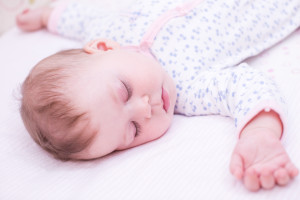Infant Sleep Safety: Tips to Keep Your Newborn Safe at Night
 As your newborn begins to drift into sleep, his worries simply melt away. For moms, however, worrying about your baby never ends, even when he’s sleeping. The frightening reality is that if not properly positioned in a safe environment, your baby could experience an accidental injury while sleeping—or worse, a complication that leads to Sudden Infant Death Syndrome (SIDS). To keep your new addition safe all through the night, review the following newborn sleep safety tips.
As your newborn begins to drift into sleep, his worries simply melt away. For moms, however, worrying about your baby never ends, even when he’s sleeping. The frightening reality is that if not properly positioned in a safe environment, your baby could experience an accidental injury while sleeping—or worse, a complication that leads to Sudden Infant Death Syndrome (SIDS). To keep your new addition safe all through the night, review the following newborn sleep safety tips.
Sleep Positioning and Environment
How your baby is positioned for sleep is extremely important for his safety.
- Put your baby to sleep on his back on a flat, firm surface, like a crib or a bassinet. Your baby should sleep on his back until he’s one year old.
- Do not put your baby to sleep on a soft surface such as a waterbed, sofa, or soft mattress.
- If your baby’s crib is near a window, remove any dangling window cords, or any nearby electrical wires, as they could cause a choking hazard.
- Dress your baby in light sleep clothes, such as a blanket sleeper. Infant sleepwear should never include any drawstrings, ties, or hoods, and should not cover baby’s head.
- Keep the room at a comfortable temperature. If baby is overheating, his chest will feel hot to the touch.
- Give your baby a pacifier to help protect against SIDS. Do not hang the pacifier around your baby’s neck or attach it to clothes or toys.
Crib Safety
Make sure to use a crib or bassinet that meets current infant safety standards.
- Don’t use cribs with drop-side rails.
- Do not use portable bed rails. They may not prevent your infant from rolling out of bed, and may pose a risk of choking, or trapping.
- Don’t try to fix a crib that has broken or missing parts. Replace it with a new, reliable model.
- If using a crib mattress, cover it with a tightly fitted sheet.
- Only use the mattress designed for your baby’s crib or bassinet. A safe product should be designed so that the bed fits tightly inside the crib with no spaces, and the mattress should be firm and not dip in response to baby’s weight.
- To minimize the risk of suffocation, strangulation, or other dangerous situations, do not put toys, soft objects, loose bedding, or crib bumpers in the crib.
Do Not Bed-Share
If you have other little ones, or were blessed with multiples (such as twins or triplets), put each baby to bed in his own crib. Do not bed-share. That also means it’s important that you not put your infant in your own bed with you. Bed-sharing is the most common cause of death in babies under three months old. According to The American Academy of Pediatrics (AAP), your baby should sleep in your room and near your bed, but not in your bed for the first year of his life.
Sleep Length
Try to regulate your newborn’s sleep. Baby will need about 16 hours of sleep per day, and will likely take it in three- to four-hour sessions. Baby’s sleep habits will likely correspond to his need to eat every few hours. Proper amounts of food and sleep will help keep him less agitated and fussy.
Talk to Your Baby’s Pediatrician
If you have any questions about your baby’s sleep habits, or about infant sleep safety, speak to his doctor. He/she can answer any questions and guide you toward healthy practices so you and your baby can both sleep soundly.
More